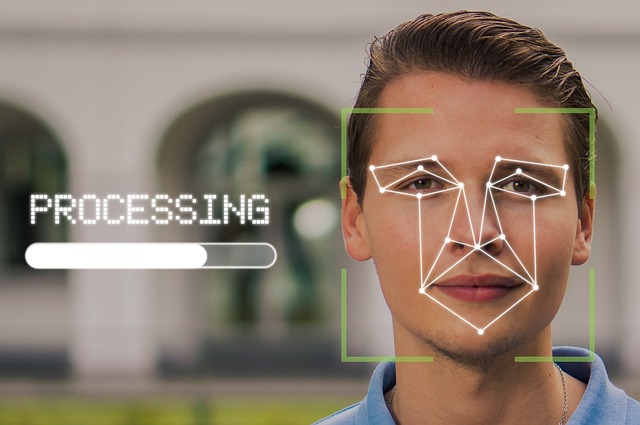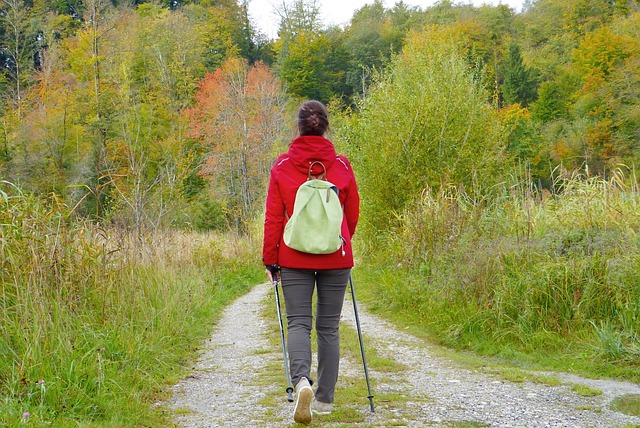Mindfulness for Beginners: Simple Techniques to Start Your Journey
Table of Contents
- Introduction
- Understanding Mindfulness
- The Importance of Mindfulness for Beginners
- Simple Techniques to Start Your Mindfulness Journey
- How to Incorporate Mindfulness into Your Daily Routine
- Resources for Further Learning
- Conclusion
Introduction
If you’re here, it means you’re ready to explore the transformative power of mindfulness. As a seasoned Personal Development Coach with a focus on Mindfulness, I’ve witnessed the remarkable changes this practice can bring about. So, let’s get started on this exciting journey of “Mindfulness for Beginners.”
Understanding Mindfulness
What is Mindfulness?
Mindfulness is the practice of being fully present and engaged in the current moment. It’s about observing your thoughts, feelings, and surroundings without judgement. It might sound straightforward, but in our fast-paced, multitasking world, it can be quite challenging. This practice can be particularly beneficial in enhancing your work life and career.
The Science Behind Mindfulness
Numerous scientific studies have shown that mindfulness can reduce stress, improve focus, and contribute to a greater sense of overall well-being. It’s not some esoteric, unreachable state of mind, but a practical, accessible tool that anyone can use to enhance their life.
Common Misconceptions about Mindfulness
A common misconception about mindfulness is that it involves emptying your mind of all thoughts. However, mindfulness is not about suppressing thoughts but observing them without getting swept away. It’s about acknowledging your feelings without letting them dictate your actions.
The Importance of Mindfulness for Beginners
Stress Reduction
One of the most significant benefits of mindfulness is its ability to reduce stress. By focusing on the present moment, we can let go of anxieties about the future and regrets about the past. This shift in focus can have a profound impact on our stress levels.
Improving Relationships
Mindfulness can also enhance our relationships. By being fully present when interacting with others, we can listen more effectively, communicate more clearly and foster deeper connections.
Personal Growth and Self-Awareness
Practising mindfulness can lead to greater self-awareness, helping us understand our thoughts, emotions and reactions better. This understanding can promote personal growth and lead to more mindful decision-making. To see how mindfulness can transform lives, especially for those dealing with social anxiety, check out this guide.
Simple Techniques to Start Your Mindfulness Journey
Mindful Breathing
Mindful breathing is a simple yet powerful mindfulness technique that can be practices by anyone, anywhere. It’s a foundational exercise in mindfulness that helps anchor your focus in the present moment.
- Find a quiet and comfortable place to sit: This could be a cosy corner of your room, a peaceful spot in your garden, or even your office chair. The key is to find a place where you feel at ease and are less likely to be disturbed.
- Adopt a comfortable posture: Sit upright, but not too stiff. Rest your hands on your knees or in your lap. The goal is to maintain a posture that is relaxed yet alert.
- Close your eyes and take a few deep breaths: This helps to signal your body that it’s time to relax and focus inward. Feel the cool air entering your nostrils and the warm air leaving.
- Gradually shift your focus to your breath as it goes in and out: Notice the sensation of the breath as it enters and leaves your body. Feel the rise and fall of your chest or your belly. There’s no need to alter your breath; simply observe it as it is.
- If your mind wanders, gently bring it back to your breath: It’s completely normal for your mind to wander off. You might find yourself thinking about what to cook for dinner, a conversation you had earlier, or your to-do list for tomorrow. Whenever you notice that your mind has wandered, gently but firmly bring your attention back to your breath.
- Maintain this practice for a few minutes: Start with 5 minutes a day, and gradually increase the duration as you get more comfortable with the practice.
Remember, the goal of mindful breathing is not to achieve a state of eternal calm or to banish all thoughts. It’s about training your mind to focus on the present moment, and cultivating an attitude of acceptance and non-judgement towards your experiences.
Body Scan Meditation
Body scan meditation is a powerful mindfulness technique that promotes a deep sense of relaxation and awareness. It involves mentally scanning your body from head to toe, paying attention to any sensations, discomfort, or tension.
- Lie down in a comfortable position: Find a quiet place where you can lie down without being disturbed. This could be your bed, a yoga mat, or even a comfortable rug. Ensure that your body is in a neutral position and try to minimise any strain or tension.
- Close your eyes and take a few deep breaths: This helps to signal your body that it’s time to relax and focus inward. Feel the cool air entering your nostrils and the warm air leaving. This initial phase of deep breathing can help you get in the right mindset for the body scan.
- Gradually shift your focus to your body, starting from your toes and moving up to your head: Begin by focusing on the individual toes on your left foot, then move to the foot itself, then the ankle, and so on. Gradually move up through your body—the legs, abdomen, chest, arms, and neck—until you reach the top of your head.
- Notice any sensations in each part of your body without judgement: As you mentally scan each part of your body, notice any sensations you feel. This could be warmth, coolness, tension, relaxation, tingling, or even numbness. The goal is not to change or judge these sensations, but simply to observe them.
- If your mind wanders, gently bring it back to the body part you were focusing on: It’s natural for your mind to wander off during the body scan. When you notice this, gently guide your attention back to the part of the body you were focusing on.
- Take your time: A body scan can take anywhere from 5 minutes to half an hour, depending on your pace. Don’t rush the process. The goal is to cultivate a gentle awareness and acceptance of your body.
Remember, body scan meditation is not about achieving a specific goal or getting rid of unpleasant sensations. Instead, it’s about developing a mindful awareness and acceptance of your body as it is. Over time, this practice can help you become more attuned to your body’s needs and promote a greater sense of overall well-being.
Mindful Eating
Mindful eating is a mindfulness practice that encourages a heightened awareness of the sensory experiences associated with eating. It’s about slowing down, savouring each bite and appreciating the nourishment food provides.
- Choose a small piece of food, like a piece of fruit or a handful of nuts: Start with something simple and nutritious. The goal is to focus on the experience of eating, not the food itself. So, it’s best to choose something that you enjoy but don’t usually indulge in.
- Before you eat, take a moment to look at the food and appreciate its colours and textures: Observe the food in front of you. Notice its colour, shape, and texture. Consider where it came from and the journey it took to get to your plate. This moment of appreciation can enhance your awareness and anticipation.
- As you eat, pay attention to the taste and texture of the food in your mouth: Take a bite and let the food settle in your mouth before you start to chew. Notice the initial taste sensation. Is it sweet, salty, sour, or bitter? As you begin to chew, pay attention to the texture. Is it soft, crunchy, or chewy?
- Chew slowly and savour each bite: Resist the urge to quickly chew and swallow. Instead, take your time to really taste the food. Try to identify the different flavours. As you swallow, notice the sensation and follow the food as it moves down your oesophagus and into your stomach.
- Pause between bites: Instead of immediately taking another bite, put your utensil down and take a moment to breathe. This pause gives you a chance to check in with your hunger and fullness cues, helping you avoid overeating.
- Reflect on the experience after eating: Once you’ve finished eating, take a moment to reflect on the experience. How do you feel? Satisfied? Still hungry? Overfull? By paying attention to these feelings, you can make more mindful decisions about eating in the future.
Remember, mindful eating is not a diet or a set of rules. It’s a practice that helps you develop a healthier and more joyful relationship with food. It encourages you to appreciate your food, listen to your body’s cues, and truly savour the act of eating.
Walking Meditation
- Walking meditation is a mindfulness practice that combines the physical act of walking with the mental discipline of meditation. It’s a great way to incorporate mindfulness into your daily life, especially if you find sitting meditation challenging.
- Find a quiet place where you can walk without distractions: This could be a peaceful path in a park, a quiet hallway, or even your backyard. The key is to find a place where you can walk back and forth for 10-15 paces—it’s not about the scenery, but rather about being fully present in the experience of walking.
- Stand at one end of your chosen path: Stand upright with your feet hip-width apart. Feel the ground beneath your feet. Take a few moments to be still and gather your attention.
- Start walking slowly: Begin to walk at a slower pace than usual. Be mindful of each step from the moment your heel hits the ground until your toe lifts off. Try to keep your hands relaxed at your sides or clasped gently in front of or behind you.
- As you walk, pay attention to the sensation of your feet touching the ground: Notice the shifting of your weight from one foot to the other. Feel the contact of your foot as it meets the ground and the sensation as it lifts off again.
- Expand your awareness to other sensations: After a while, you might expand your awareness to the sensation of the air against your skin, the movement of your arms, or the sounds around you.
- If your mind wanders, gently bring it back to the sensation of walking: It’s natural for your mind to wander. When you notice this happening, gently guide your attention back to the experience of walking, without judgement or frustration.
- When you reach the end of your path, pause for a moment: Reflect on the experience, then turn around and continue walking in the opposite direction, maintaining your mindful awareness.
Remember, the goal of walking meditation isn’t to arrive at a particular destination, but to bring full attention to every step, to be fully present and aware in each moment. It’s a simple yet powerful practice that can help you cultivate mindfulness and presence in your daily life.
How to Incorporate Mindfulness into Your Daily Routine
Creating a Mindfulness Routine
Start by setting aside a few minutes each day for mindfulness practice. It could be in the morning, during your lunch break, or before bed. The key is to choose a time that works for you and stick to it.
Overcoming Challenges
It’s normal to face challenges when you start practising mindfulness. You might find it hard to focus, or you might get frustrated when your mind keeps wandering. Remember, mindfulness is not about achieving a perfect state of calm but about observing your experience without judgement. Be patient with yourself and keep practising.
The Role of Consistency
Consistency is crucial in mindfulness practice. It’s better to practice for a few minutes every day than for an hour once a week. Over time, these small moments of mindfulness can add up and lead to significant changes.
Resources for Further Learning
There are plenty of resources available to help you on your mindfulness journey. Here are a few recommendations:
- Books: “Wherever You Go, There You Are” by Jon Kabat-Zinn and “The Miracle of Mindfulness” by Thich Nhat Hanh are excellent introductions to mindfulness.
- Apps: Apps like Headspace and Calm offer guided meditations and mindfulness exercises.
- Local workshops and retreats: Check out local mindfulness workshops and retreats in your area for hands-on learning.
- You can also check out these Book Notes and Summaries for more insights.
Conclusion
Embarking on a mindfulness journey is one of the most rewarding decisions you can make. It’s not always easy, but the benefits are worth it. Remember, mindfulness is not a destination, but a journey. So, take the first step today and see where it leads you.
I hope this guide to “Mindfulness for Beginners” has been helpful. Now, it’s your turn to put these techniques into practice. Start small, be patient with yourself, and remember to enjoy the journey. You’ve got this!





